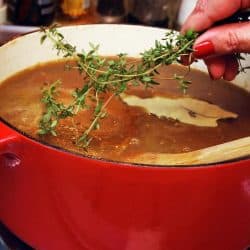Immersion blenders also referred to as hand blenders, are excellent for turning basic soup recipes into a tasty puree, making homemade salad dressings and smoothies. But are these handy blenders safe for use in a Le Creuset dutch oven? Will it scratch and ruin a non-stick pan? We've researched these questions and have found factual answers for you.
Yes, you can use the immersion blender in the Le Creuset enamel cookware. However, it is advised to be mindful of holding the blender in the middle of the pot to diminish the chances of the blades touching the sides or the bottom of the pot. Le Creuset is confident that an immersion blender is safe for their cookware; they even suggested using an immersion blender in their recipes for creating soups with a smooth consistency.
Are you curious which types of cookware are safe to use with your immersion blender? Are there brands or types of cookware to avoid? Is the immersion blender worth the investment? What attachments are on the marketplace that minimizes potential damages? Please continue reading to learn more about these topics!
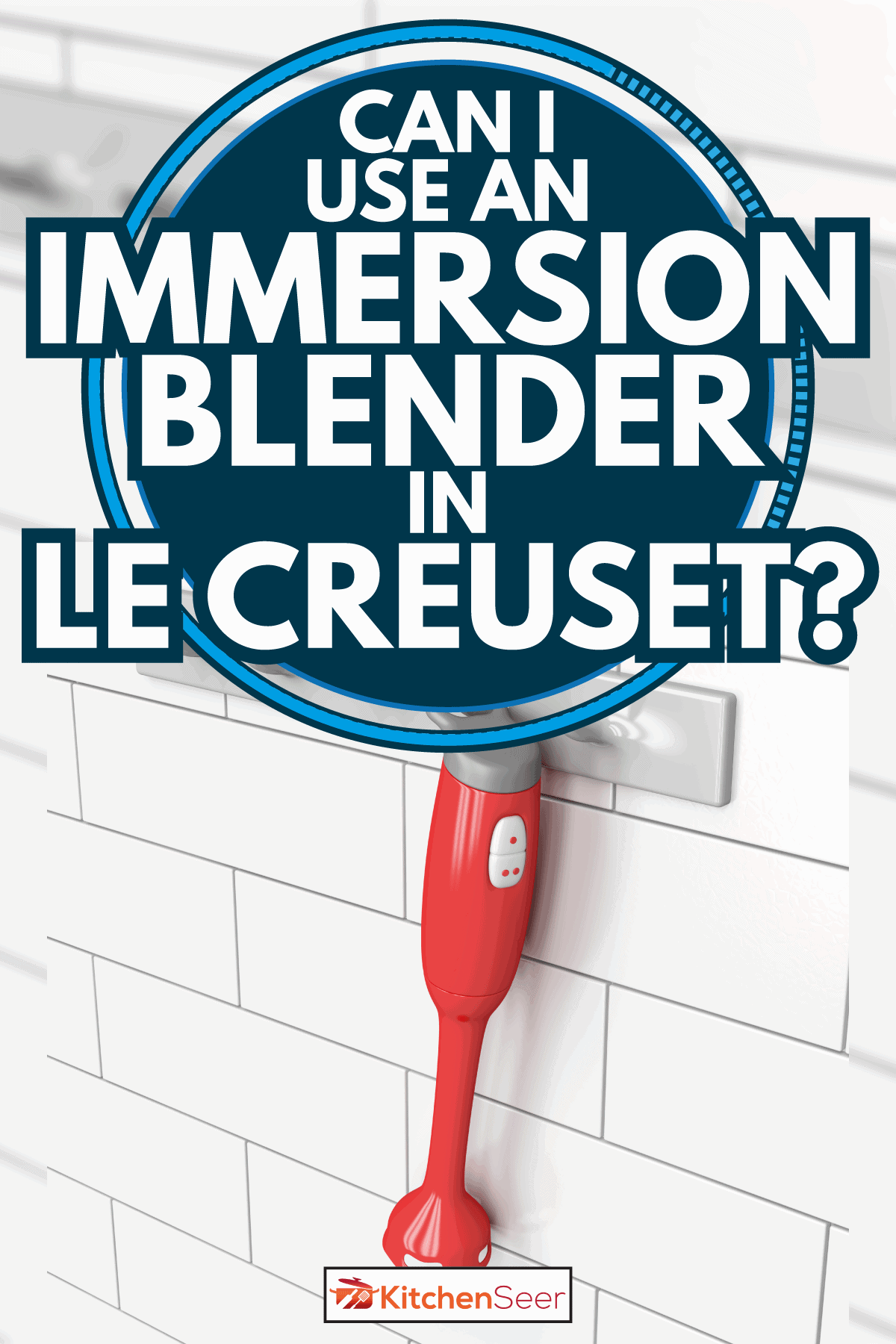
Le Creuset construction and durability
Le Creuset, headquartered in France, created the world's first colored cookware in 1925, a dutch oven colored with the iconic flame orange enamel that trademarked the brand's high quality. The company led the way in creating durable and stylish cookware for home cooks and professionals around the world.
The hallmark characteristic of Le Creuset is the dutch-oven manufactured from enamel coated cast iron that provides superior heat distribution and locks the ideal amount of moisture that ensures the contents will be evenly cooked to perfection and never dry out the foods.
Click here to view the flame orange Le Creuset Dutch oven 5.5 qt. at Amazon.
If you choose to use your immersion blender in the Le Creuset dutch-oven, do be mindful that the blades do not come in contact with the bottom or sides. It could create minor marks that won't necessarily render the pot damaged but rather distract from its professional appearance. The dutch oven is still functional if this happens. However, considering the hefty price tag that comes with a Le Creuset, it is best to avoid damaging it.
To reduce the risks of damage, only use an immersion blender with a non-scratch base and position the blender in the middle of the pot. Please do not use it the same way as a conventional hand mixer and move it around the pot. It will cause tiny scratches in the enamel, and the cast iron interior could dull the blades of the blender.
Click here to view an immersion blender with a non-scratch base at Amazon.
Read more about Le Creuset here: Can Le Creuset Ceramic Go On The Stove?
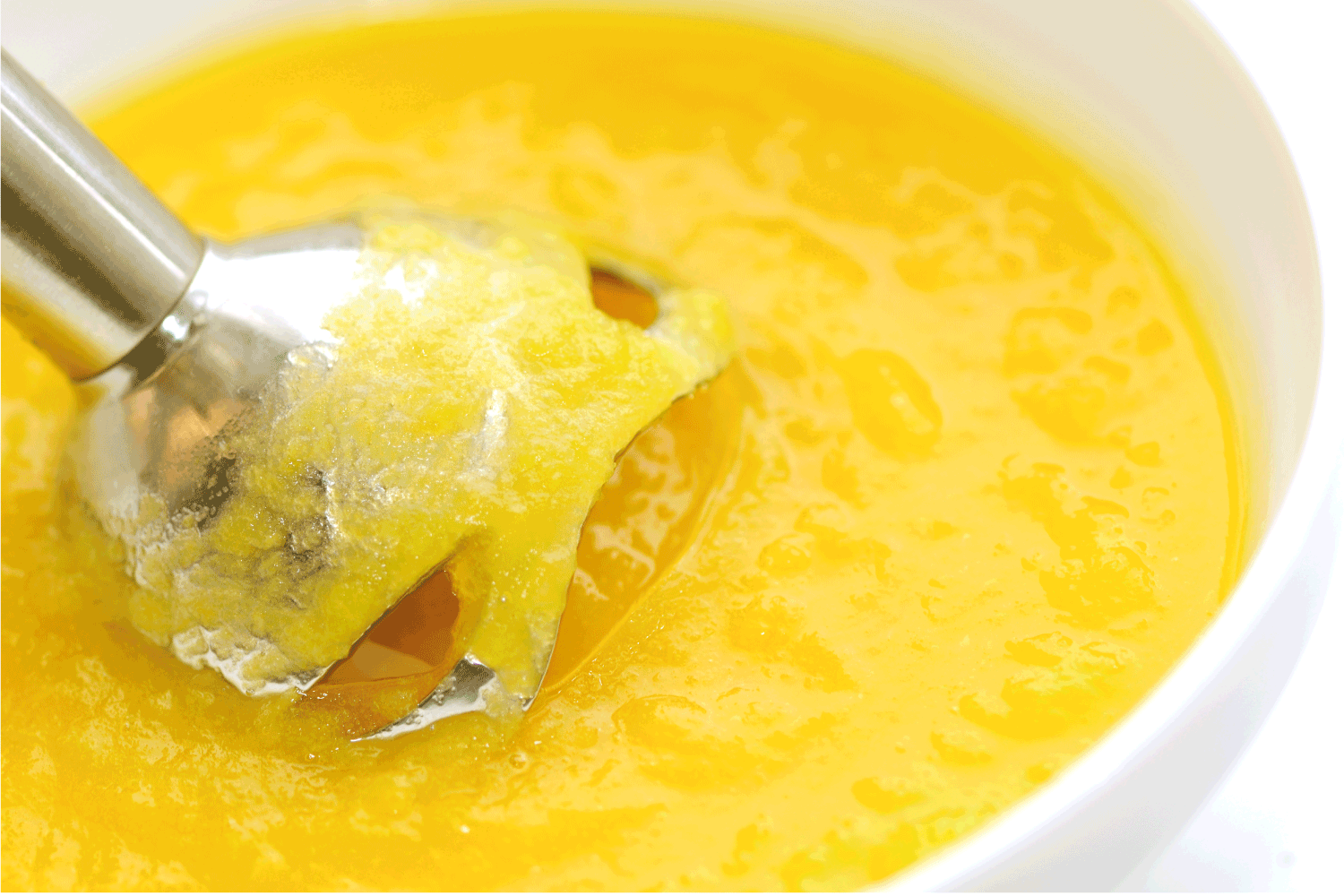
Can I use an immersion blender in a non-stick pan?
Generally, if the blender scrapes the bottom or the sides of a non-stick pan, it will cause damages to the pan by removing the non-stick coating. If enough of the coating is removed, that part of the pan will no longer be non-stick.
According to the New York State Department of Health, scratched or chipped areas could release toxic chemicals that could be harmful to the human body. It is advised to stop using any non-stick cookware once it has been damaged from scratches.
Depending on the brand, one could purchase an immersion blender with a non-scratch base to minimize the risk of ruining non-stick pans. Also, it is best to avoid stirring non-stick cookware with metal utensils. Instead, use wooden utensils to diminish potential damages.
Click here to view quality wooden utensils at Amazon.
The best advice is to only use the blender sparingly for short bursts of mixing. Prepare harder, textured foods like beans, corns, vegetables with a food processor or by hand with a knife to avoid ruining cookware. If concerned about blending in the non-stick pan, try to substitute it for stainless steel or blend the foods in a scratch-proof bowl. Or purchase an immersion blender with a pan guard to help reduce contact with non-stick pans.
Click here to view KitchenAid's immersion blender with a BPA-free pan guard at Amazon.
Read more about immersion blender alternatives here: 7 Immersion Blender Alternatives
Will an immersion blender scratch stainless steel pots?
The immersion blender will scratch the bottom of the stainless steel pot if it suctions or bumps the pot's bottom. The scratches, if minor, will not completely ruin the pot but can cause it to look less appealing.
To avoid this issue, purchase an immersion blender with a non-scratch base or buy a pan guard. Also, hold the blender in the middle and tilt the pot to avoid scraping the sides.
If this is not possible, allow the contents in the pot to cool, transfer it to a large scratch-proof bowl for blending. Doing so will create another step. But it could prevent causing unsightly damages inside your stainless steel pot.
Suggestions for avoiding scratches
Any brand or type of cookware could be scratched if in contact with the immersion blender blades. Also, the blades are dulled by contact with your cookware. The key to avoiding these issues is to follow a few cookware and blender usage tips. Consider implementing the following techniques to prevent scratches and to extend the life of your blender and cookware.
- Always use cookware that is large enough for the blender to fit comfortably. Forcing the blender into small spaces will cause damages to the blades and cookware.
- Ensure the sides of the container or the pot are high enough to prevent the foods from flying out when blending.
- When blending in glass jars to make smoothies or salad dressings. Ensure the jar is heat-resistant; the heat-tempered glass will be much more durable for blending than glass that is not heat-resistant.
- Consider purchasing a blade or pan guard. These are designed to reduce messes in the kitchen and help keep the blender inside the bowl or pot.
- Do not blend small amounts of food in large bowls or pans. It will be hard for the blender to mix thoroughly, and the extra space lends to scratching the cookware.
- Never submerge the blender in a large pot of soup and leave it unattended. It will likely sink, damaged the bottom of the pan, and potentially cause injury when removed.
- When blending, make sure the blades are at least an inch or more from the bottom of the pot. The blender will mix more efficiently, and you will avoid scraping the bottom, which will dull the blades and wreck the cookware.
- Consider using a scratch-proof bowl for blending foods with a tougher consistency.
- Purchase an immersion blender with a pan guard or order one for your existing model to help guard your cookware against mixing mishaps.
Click here to view a scratch-proof bowl at Amazon.
In closing
Immersion blenders are great for quickly blending mixtures while cooking on the stovetop. Do practice mindfulness when using these in your kitchen to prevent damaged cookware or personal injury. We sincerely hope this article has helped you navigate the world of cookware. Please visit Kitchenseer.com soon for more useful culinary content!






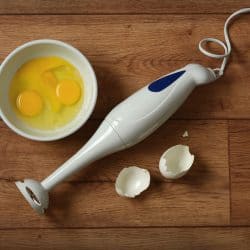
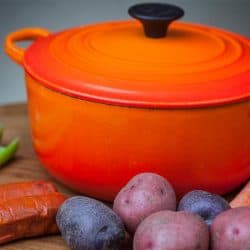
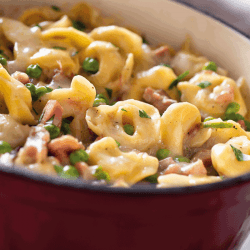
![An immersion blender left on top of the table, Is An Immersion Blender Dishwasher Safe? [Including A Look At Top Brands]](https://kitchenseer.com/wp-content/uploads/2021/07/An-Immersoin-blender-left-on-top-of-the-table-250x250.jpg)

